How to Create a Powerful Value Proposition with Examples That Convert Visitors
The primary reason why you purchase a certain product or a service is the value proposition. Most people purchase a BMW for sheer driving pleasure, most people go to Disneyland to entertain their children or have fun. But these brands are well known throughout the entire world and since their value proposition is so famously […]

The primary reason why you purchase a certain product or a service is the value proposition. Most people purchase a BMW for sheer driving pleasure, most people go to Disneyland to entertain their children or have fun. But these brands are well known throughout the entire world and since their value proposition is so famously embedded into the consumer mind, you always know what you are paying for.
How can you embed your brand’s value proposition into the consumer mind? And if you don’t have one just yet, how can you start right away?
What makes a relevant value proposition?
You should not only think of the value proposition as something out there that your clients must understand at all costs. You should also write it down as the clearest possible sentence that you can explain to the most unsophisticated consumer you would be targetting.
The key elements of a value proposition
If we have to explain it as simple as possible, a value proposition is a clear statement that is relevant, offers quantified value to the consumer and differentiates from the competition’s products. This means, that in order for you to deliver all that in one go your product or service would need to:
- Be able to solve the customer’s initial need for purchase. (Example: You need a deodorant to mitigate bad smell and smell attractive. Some do that better than others.) If you purchase a deodorant that doesn’t do its job you are less likely to get it again. This means it fails to be relevant.
- The product delivers very specific benefits. (A BMW delivers sheer driving pleasure, A Toyota delivers reliability, ample space, and gas economy).
- Differentiate itself from the competition. (Why is your product better than competitor X? Why would you drink Coca-Cola, instead of Pepsi? Does it have less sugar? Does it taste better? How are these products different?)
The value proposition should be readable and easy to understand
Not only does your value proposition need to be easy to read and understand, but it also needs to be honest.
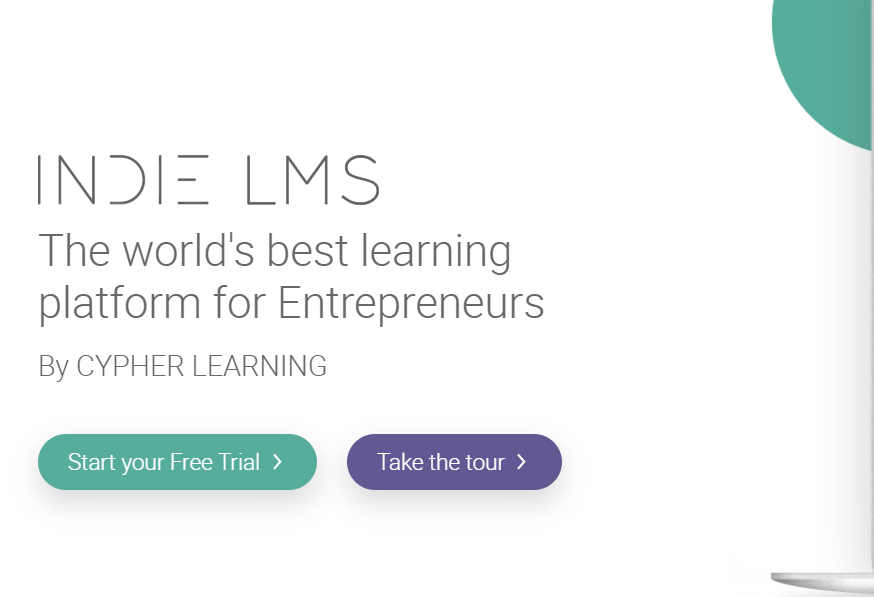
The above example is a bit braggy, isn’t it? I’ve never heard of Cypher learning, yet it states that they are the best learning platform for entrepreneurs. Avoid intruding a potential client’s judgement. Let them be the judge of whether your company is the best or not.
The value proposition shown above is understandable but is very braggy and dishonest.
“Our company creates Marketing Automation with a clear focus on revenue & sales optimisation solutions that enhance your revenue cycle.”
If you don’t understand what the company does from the first sentence, they’ve clearly done a horrible job and introducing themselves. How can you expect them to do a good job of whatever they are offering? This is another bad example which might be honest but is hard to read and very few customers would actually continue reading on after being confused for starters.
Use the right language
You are already very well informed about your product or service and you practically know the terminology used as the back of your hand. If you consult yourself with your colleagues or employees, they will also be better informed than your average consumer. The simplest way to translate what you are trying to say into a less complex language is to interview a focus group of consumers.
The way your clients speak about your product between themselves is the way you should speak to other potential leads. Your tone and choice of words should be as close as possible to that. Ask your clients how would they describe your service to a friend or even have them in a group explain to complete strangers who haven’t heard of it. You can do that live or in a messaging group or online video meeting. You would be amazed at how many people would come to help you if they love your product, that is.
Don’t mistake a value proposition for a slogan

L’Oréal’s famous “Because we’re worth it.” or McDonald’s “I’m loving it!” is just a slogan and not a value proposition. You don’t actually learn anything about the company from this sentence. Slogans have an entirely different intention which we might discuss in another article.
What is the composition of a good value proposition?
If you want to clearly explain what your company does and why you’re the best choice for your clients, stick to a block of text and a visual combined. This would mean you are going to need a headline, a sub-headling or a short paragraph that is very specific and visual representation. The simplest way to structure it should look like:
- Headline. Are you selling a supercar? Your heading can be “Agility”, “Speed” or whatever grabs their attention. In the paragraph below, you need to explain.
- A short paragraph. In this short paragraph, you would need to explain why is your product “Agile” or “Fast”, as we mentioned in the headline. Does it have an improved engine, or is it much lighter than anything else ever produced?
- Key features. You can always list a few benefits below in bullets. Following the car analogy, super-car manufacturers tend to list horsepower, engine capabilities, etc.
- Image. Nothing explains better than an image or video of your product in action. Pair text and image and you’ll have great results. Reinforce your main message.
If you find yourself in the lack of a good product image, it might be a good investment to hire a professional photographer. The value proposition you drafted should answer all of these questions:
- What makes your product unique and better than the ones of your competitors?
- Anyone should be able to tell whether they are your target customer after reading this.
- What is the end-benefit of your product? What problem does it solve?
- What is the product exactly? (Is it a car, an SUV, a motorcycle or a formula one car?)
You don’t need to answer all questions in one part of your value proposition. Some can be answered in the heading, others in the text block, and something that would otherwise take a lot of words to describe could be shown in the image. There are many templates on how to structure a working value proposition online.
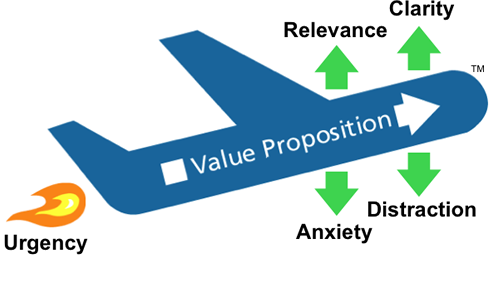
As stated in the image above good value proposition needs to be:
- Clear and easy to understand.
- To communicate the immediate benefits a customer will get when purchasing.
- To explain why is it better than the counteroffer of your competitors.
- Does not exaggerate. (Don’t use “best”, “Amazing”, “miracle” and any other superlatives that look like overselling)
- Anyone could read and understand it in less than 10 seconds without rereading it. (This part you can test with focus groups.)
CXL conducted research that came up with a few insights on what works and what does not. Here are some of the major takeaways of their article:
- People spend more time on the value proposition part of a webpage than in other sections such as product pages and about.
- People tend to notice the value proposition when it has more text than just one sentence.
- Value propositions tend to work better when they list more advantages and features.
- Value propositions work better if the benefits are presented in bulleted lists like this one.,
How to come up with a great value proposition
The best value proposition for your company needs to be clear on a few questions. Who is it for? How is your product useful, and why is it better than other similar products that solve the same problem. Don’t take the “who is it for” part too literally. There is no need to write “this product is for successful business people”. Just make that obvious in the images or the wording.
When drafting your proposition, always strive for clarity above anything else. The sentence needs to be understood right away from the first read. Moreover, make sure to include enough information so that people get to understand what your product revolves around.
Your value proposition does not need to be “The Best” it just needs to vibe with a certain niche audience more than other products they’ve researched in the segment. People tend to research a few products before making a decision, especially if they are making a rather big purchase. The bigger the investment, the more products people research.
You want your product to stand out during the research phase. Sometimes, you might have the best product, but you could omit important information in the value proposition, leaving people ignorant of it. Yet, you want your value proposition to be unique. And not only for the sake of it, but an actual part that informs your potential customers about something vital to the success of your product needs to be presented in a unique way.

In the image above you can clearly see one of the most downloaded finance apps out there. You can also know right away where it is available (In the app store and on google play), who is it for – practically everyone interested in personal finance, and what it does – it helps you customize your budget.
Instead of bullets, in this example, the product owners have used green affirmation ticks. You can use stars or whatever, as long as it fits your brand image.
Some great benefits to mention if your product is eligible for them (Budget-friendly, totally free is a good example in the picture) are:
- Fast shipping
- Free Shipping
- A certain bonus for first-time customers
- No starting fees, or no recurring fees.
- No contract (for services)
- License on multiple devices (For services)
- Discounted price
Hopefully, that gives you some insight on what benefits you can leverage for your specific product in order to get a better sit in your potential client’s minds.
Exemplary Value propositions to learn from
Sometimes showing is better than telling. Let’s examine some notable value propositions of already successful products and services. Some rely on a spot-on call to action button. Others explain the majority of their value proposition in the heading, while only battling a few objections with bullet points and text. Learn from the best examples out there and construct your own exemplary value proposition.
1. Spotify’s value proposition
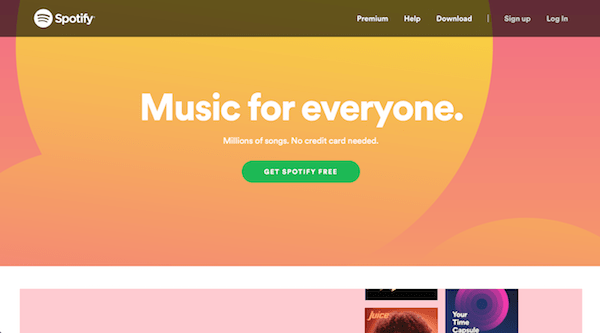
In the beginning, Spotify relied more on explaining what the service was. After they became widely successful, their value proposition battles the objections of the client one by one with simple statements. People prefer a free trial or free use of an app in the beginning. The freemium business model of Spotify is well-known among competent marketers. You start by giving the product for free but later capitalize on either ads or the removal fee of these ads.
As you can clearly see, the objections battled in these two lines of text are that you don’t need a credit card, it’s free. You also get to know for who the service is – everyone, and what it is – Music.

The next thing that Spotify does is to eliminate all other objections a free user would have. If you want to keep using the app without paying you to get less than the paid users. And what do they get? Well, practically everything you would improve about the app. Spotify’s example is a great way of you to learn how to highlight the benefits of your product or service.
2. Zoom’s value proposition
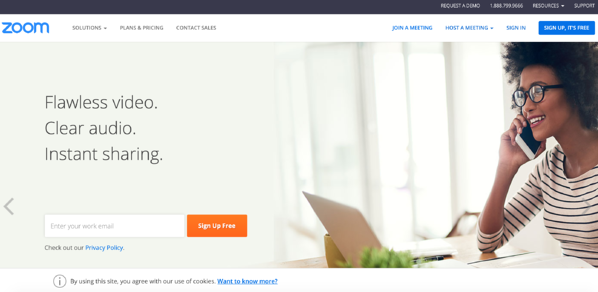
Recently Zoom established itself as the leading online meeting app in the world. This was not the fruit of sheer luck. Aside from an excellent product, the company is very straightforward and honest about the capabilities of their software without exaggerating. You won’t see tags such as “The Best” app since they are subjective to the client’s opinion. Although, Zoom tends to brag about being the most downloaded app in the segment of the online conference, which is true and a good selling point.
When you get on the homepage of the service, you get to know what you are getting right away – video, audio and sharing. Pair these with some adjectives that are relevant to the service’s quality and you get things done. Simple as that.
3. Airbnb’s value proposition
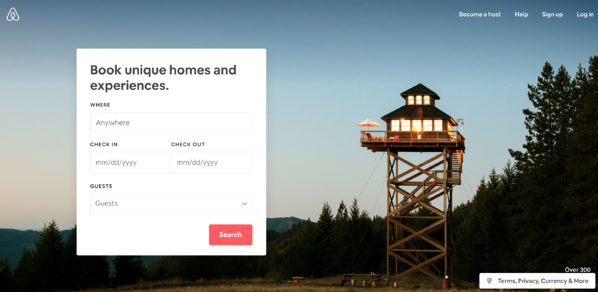
What? Unique homes and experiences booking.
Where? Airbnb took a very creative way of answering this question by putting the answer in the form – Anywhere. Moreover, they’ve made it simple by killing two birds with one stone – their sign up or search as you may call it is one and the same with their value proposition on the main page.
4.Skillshare’s value proposition
From Skillshare’s value proposition, you get an instant answer to all questions that might arise in a first time visitor.

- What is Skillshare selling? – Online courses on creativity.
- What would your benefit be? – You will learn a new skill of your choice if you devote your time.
- How is this different from other learning platforms? – It’s for “Creative” skills, not just skills or classes.
- Who is Skillshare for? – Anyone who wants to learn something new regarding creativity without committing to a certain physical class or location.
Moreover, as you can see, the background shows a depiction of someone practising art, which might further affect the potential client in a positive way.
5. WordPress.com

With a simple two-line headline and three sentences below it, WordPress.com explains to you what to expect.
- What is WordPress selling? – You can clearly understand that WordPress is a website builder from the heading.
- What would your benefit be? – You will be able to create a website from scratch without coding skills. (Since bloggers and small business owners do it, it shouldn’t be that hard.)
- How is this different from similar services? – 40 per cent of the web is built on it. Millions use WordPress.com. These two key parts of the paragraph are great selling points. If others use it, it must be the right choice.
- Who is WordPress for? – Anyone who wants to create a new website from scratch. Bloggers, small businesses and even Fortune 500 companies have used it, as the paragraph states. This means it’s for anyone. It’s easy to understand and shows it with a statistic.
Moreover, pay attention to the CTA (Call to action button), it’s “Start your website”, it’s not sign up or purchase or subscribe. The CTA used to be “Create Website” but they changed it so that it reaches a deeper personal level by adding “Your” to the equation. You don’t want any website, you want yours. And WordPress is here to facilitate that.
6. Preyproject.com

You get to understand right from Prey’s headline what the service is all about. It’s about device security. If you have employees that you supply laptops to for home-office work, if you manage a school or any less secure work environment than the one in the office, Prey can help you secure things.
- What is Prey selling? – Security of devices and a device management platform.
- What would your benefit be? – You would be able to return your stolen item with their system.
- How is this different from similar services? – There is both a free and a paid plan. Not only do you get to manage, but you can also secure your devices.
- Who is Prey for? – Work and school managers. Or anyone with more than one device that they feel uncomfortable lying around with sensitive information.
Image comment: Their image used to be a person holding a phone stating that they recovered it from theft. It’s recently been changed due to their 10 years anniversary which still enhances the value proposition by the underlying trust.
7. Trello

- What is Trello selling? – A system that allows you to collaborate and manage projects and increase productivity in the work environment. You get this information for the first line.
- What would your benefit be? – An easier way to communicate for work with your colleagues, employees and employers.
- How is this different from similar services? – The next section of the value proposition answers this question. It’s shown right under the hero section and states that all the information is in one place. Meaning it would save you time and the software is intuitive and easy to use.
- Who is Trello for? – People in the office, and people working home office, practically anyone working.
Examples of bad or incomplete Value Propositions
Sometimes, a certain company gets the right tone and lists some of the benefits, but forgets to point out how are they better than the competitors. Sometimes, the value proposition makes it unclear who the product or service is for. Similar missed answers should be addressed since it might lose some potential clients to your website.
1. FreshBooks
Fresh Books value proposition, Image courtesy of FreshBooks.comIn the example above, you can see a depiction of a family being happy about profiting from the software Fresh Books sell. You get to know the key benefits being:
- Balancing your books
- Managing your client relationships
That’s an okay start for a value proposition, but it lacks information on who it is for. Is it for professionals or for individuals? From the picture, you might deduce it’s for families to sort out personal taxes. Moreover, you don’t get to know why is this service better than the competitor ones. Also, I get a bit confused, is this accounting software, or is it a tool that helps you manage your team?
2. Novamind

Key things that can improve on this value proposition that you see above.
- Heading wasted: Although this one clearly explains what the main benefit is right away, the heading uses space to simply state the name of the product. As you are already on the website, you already know the name of the service. Pay attention to how good value propositions like Trello’s start with the name of the company but use a complete sentence in the heading. A good example of an improvement would be “Novamind enables you to organize ideas visually.” to become the heading instead of just Novamind.
Other questions lack explanation like:
- Who is this for?
- Is this software, or is it a browser-based tool?
- How is this better than other Mind-mapping services?
Testing your own value proposition
After you’ve browsed through some great, some average, and some value propositions that definitely need improvement, now’s the time to come up with your own.
Google Ads or Facebook Ads
You can easily use Google or Facebook ads in order to split test a few value propositions without changing the target audience. Whichever gets a higher clickthrough rate obviously grabs the attention of your audience better. Of course, this is not a clear indicator of higher conversions.
Use A/B testing
If you come up with two value propositions, you can create a split test and see which performs better by measuring conversions. If you are unable to measure conversions for whatever reason, lead counts and click-through counts can still give you enough information. Moreover, bounce rate statistics can be of great help, but that also might be a result of poor targeting, so keep an open mind when analyzing the results of your tests.
Final Words
Every business should eventually come up with a key selling point such as a unique value proposition. The sooner you get it right, the better. And when you get it right, you would know. Keep it clear, informative and make sure to answer the questions –
- What is your product?
- Who is it for?
- What are the benefits?
- How is it better than other services?
Use the headline, subheadline, text, image and CTA template and keep testing until you get everything right. Don’t be afraid to play with all the elements of your proposition.


